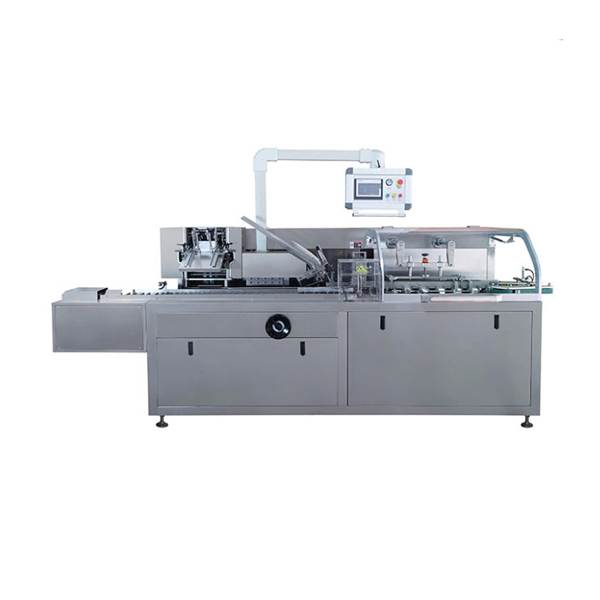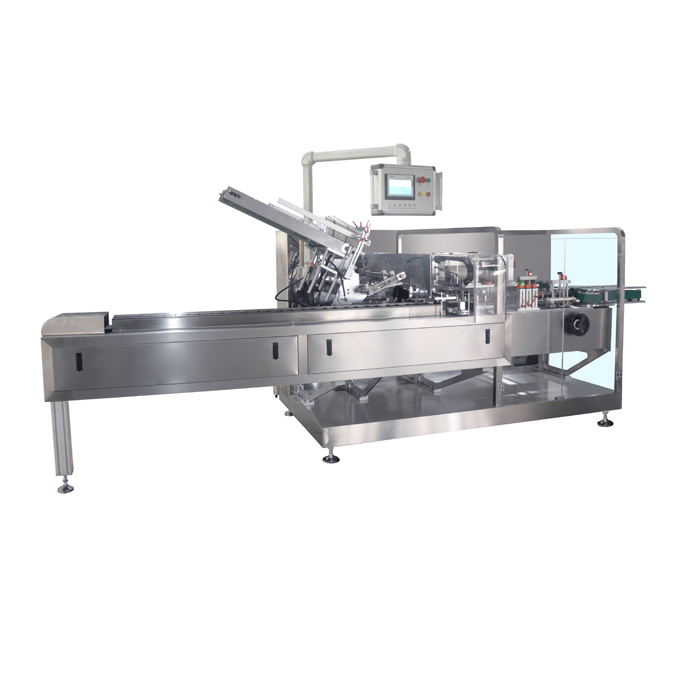Application and Development of Blister Cartoning Machine in the Food Industry

A blister cartoning machine is a key end-of-line equipment in the packaging production line. It is responsible for automatically loading blister sheets (blister packs) into cartons and sealing the cartons. It is an indispensable component for achieving automated and efficient production.
First, it's important to clarify the concepts: blister packaging machines and blister cartoning machine are two different but closely related pieces of equipment.
· Blister packaging machine: This machine forms blister cavities for products (such as milk tablets and candies) using rigid plastic sheets (PVC, PETG, etc.), fills the cavities with the products, and heat-seals them with aluminum foil or laminate film.
· Blister cartoning machine: This machine receives finished blister sheets from the blister packaging machine, picks them up, and places them into pre-folded cartons, sometimes with accessories such as instructions and spoons, before closing the lids.
I. Main Applications in the Food Industry
Blister cartoning machine are widely used in the food industry where single-serving, multiple-tablet, or multi-product packaging is required:
1. Dairy and health products: This is the most classic application. Examples include milk tablets, calcium tablets, and chewable vitamin tablets. Typically, several or even dozens of tablets are packed into a single blister pack in a carton as a sales unit.
2. High-end candies and chocolates: Examples include chewing gum (multiple blister packs per box), handmade chocolates, and health candies, enhancing product quality and giftability.
3. Convenient beverages: Examples include coffee capsules and single-serving solid beverage blister packs (multiple packs are packed into a single carton).
4. Condiments and sauces: Examples include single-serving jam and honey blister cups, which are packaged and sold in multiple packs.
5. Pet food and nutritional supplements: Examples include pet nutritional pastes (packaged in blister packs) and pet tablets. Cartoning facilitates sales and management.
II. Core Advantages and Value
The benefits of using automatic cartoning machine are obvious:
· Extremely high efficiency: Modern high-speed cartoning machines can reach speeds of 200-600 boxes per minute, far exceeding manual packaging and meeting the needs of large-scale industrial production.
· Reduced labor costs: Completely replacing the tedious and repetitive manual cartoning process, significantly reducing the number of workers and the reliance on skilled labor.
· Ensured hygiene and safety: Minimizes direct contact between people and products, complying with FDA, HACCP, GMP, and other food and drug production regulations, and reducing the risk of contamination.
· Standardized management: Ensures that each box contains the same product quantity, instructions, and accessories, resulting in a uniform packaging appearance, enhancing brand image.
· Data traceability: Can be connected to the production management system (MES) to record real-time data such as output, efficiency, and downtime, facilitating production management and optimization.
III. Technical Features and Development Level
Modern blister cartoning machine are highly intelligent and automated:
· Operating Principle: A suction cup robot or pusher mechanism is typically used to precisely pick up the blister sheet from the conveyor chain and push it into the opened carton.
· Modular Design: Mainstream machines utilize a modular design, allowing for flexible configuration with a variety of functional modules, such as:
· Instruction Sheet Folding and Insertion Device: Automatically folds and inserts the instruction sheet into the carton.
· Multi-bin Design: Simultaneously processes blister sheets of varying specifications, enabling the packaging of diverse products.
· Inline Coding System: Prints information such as the production date, batch number, and QR code on the carton.
· Visual Inspection System: A camera monitors the blister sheet for missing tablets, dirt, abnormal opening of the carton, and missing instructions, ensuring 100% conforming product quality. Flexibility and Production Changeover: Utilizing servo motors and HMI (human-machine interface) control, changing product specifications typically requires only calling up preset recipes on the touchscreen, automatically adjusting parameters, and replacing a few mechanical components (such as molds). This significantly shortens changeover time and adapts to the trend toward small-batch, high-variety production.
IV. Future Development Trends
The development of blister cartoning machines closely follows the overall trends in the food industry:
1) Higher Speed and Stability: The pursuit of ultimate production efficiency remains a constant. Future equipment will maintain higher speeds (moving toward over 800 cartons per minute) while further improving operational stability and reducing failure rates through optimized mechanical structures and the use of new materials.
2) Deep Intelligence and the Internet of Things (IoT):
Condition Monitoring and Predictive Maintenance: Sensors monitor the operating status of key components (such as the spindle and vacuum generator) in real time, providing early warning of potential failures and shifting from reactive to proactive maintenance.
Digital Twin: A digital model of the equipment is created in a virtual space for remote commissioning, operator training, and production line optimization. · AI Quality Inspection: A vision system based on deep learning algorithms can identify more complex defects and continuously optimize its judgment criteria.
3) Extreme Flexibility: Adapts to the demands of "mass customization" production. The equipment can handle a wider range of product sizes, making production changeovers more user-friendly and automated, and even enables "one box, multiple products"—automatically combining different product types into a single carton.
4) Sustainable Development:
· Equipment: Energy-saving designs are employed, such as servo drive systems that reduce energy consumption and the use of environmentally friendly lubricants.
· Packaging Material Adaptability: It can better handle recyclable and biodegradable carton materials (such as plastic-free laminated cartons) as well as lighter cartons, supporting brands' environmental strategies.
5) Seamless Integration: Future production lines will no longer operate on a single machine. Fully integrated "blister packaging - cartoning - wrapping - palletizing" will become standard for high-end products. Data exchange and coordinated control are achieved through a unified control system, maximizing overall line efficiency.
Summary
Although blister cartoners emerged later than blister packaging machine, they are a key piece of the puzzle for achieving fully automated, intelligent, and scalable food packaging. They have evolved from a simple tool designed to replace manual labor to a core intelligent device that ensures product quality, enhances brand image, and empowers production management.
Their future development will focus on four key pillars: intelligence, efficiency, flexibility, and environmental friendliness. They will deeply integrate with cutting-edge digital technologies to provide the food industry with more powerful and flexible packaging solutions. If you are considering this type of equipment, in addition to focusing on speed, you should also examine its intelligence level, ease of production changeover, and integration with existing production lines.


